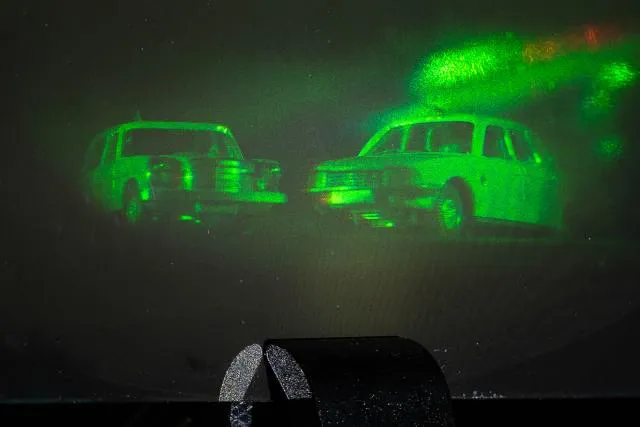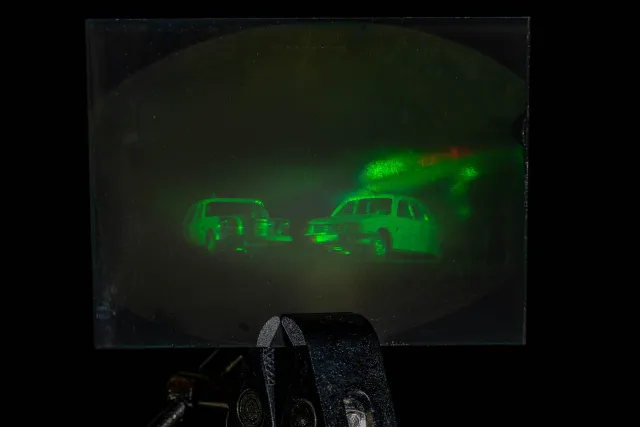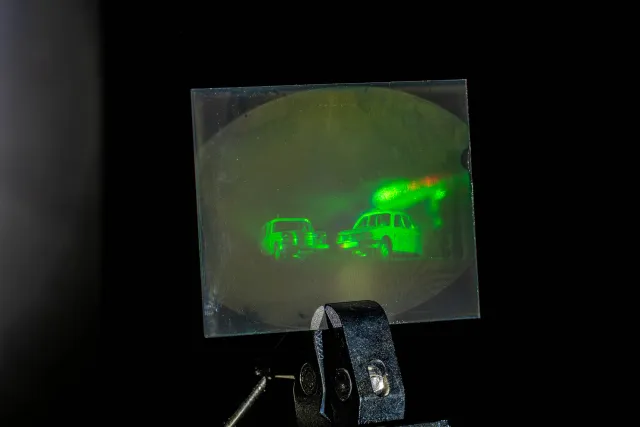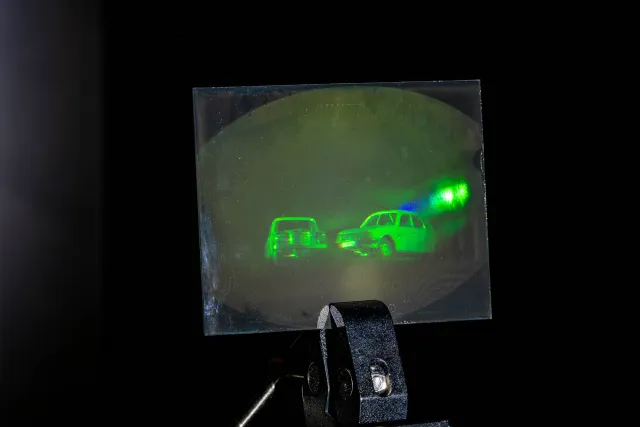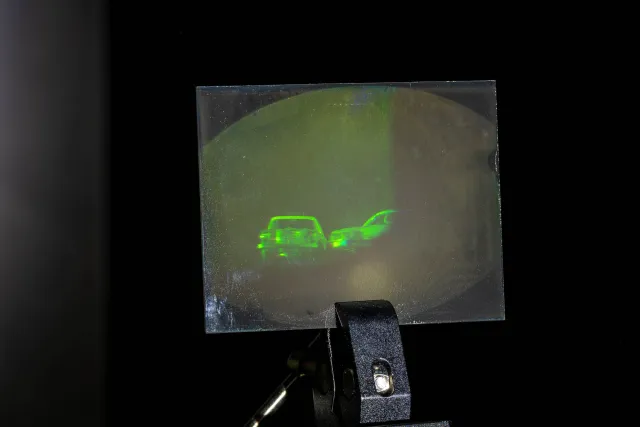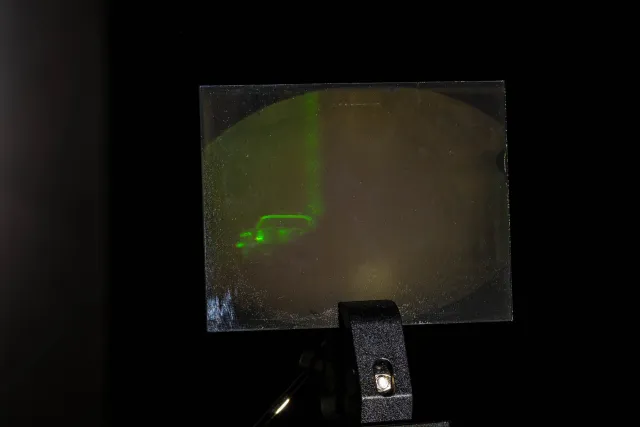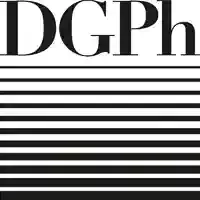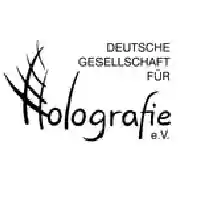While the intensity (amplitude) of the light is recorded in black and white photography, color photography also uses its frequency. In this way, two-dimensional images of our four-dimensional world are generated, which, with the appropriate image composition, can also create a perspective-spatial, three-dimensional impression and, through the choice and representation of a suitable motif, can also create the impression of a temporal component.
Holographic recording techniques not only record the amplitude of light rays but also their phase. In this way, the position of each individual point in the depicted space is recorded - even in every area of the recording medium (e.g. high-resolution photo plate). In this way, the relationship to the motif can be fully reconstructed even from fragments of a holographic recording.
But this recording technique is anything but trivial. While photographic recording techniques are to some extent fault tolerant and e.g. forgive minor movements of the subject, holographic recording techniques are very sensitive to even the smallest movements of the entire recording structure.
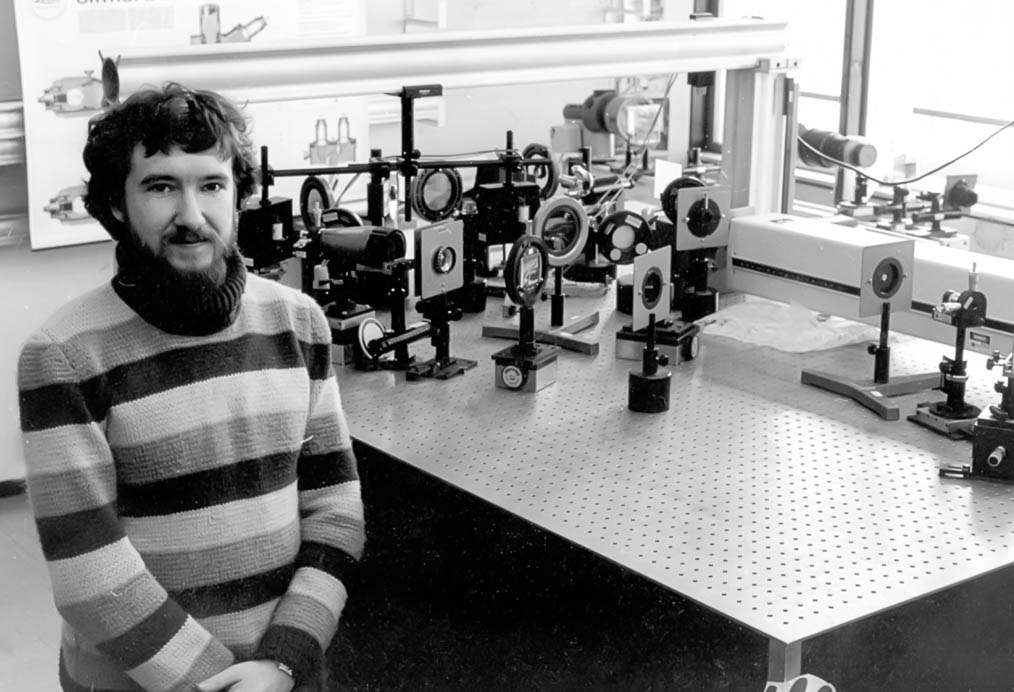
The laboratory photo from 1978, for example, shows the photo table, which weighs several tons, has a thermally compensated honeycomb structure and floats on four compressed air rams. The optics required for creating holograms are located on it (Emmett Leith / Juris Upatnieks structure) as well as an argon laser with water cooling.
After the discovery of holography by Dennis Gabor in 1948, it was only after the development of laser technology by Maimann in 1960 that light with sufficient coherence length could be generated to develop the parallel structure of Gabor with its inevitable double images to an optimized structure with a separate reference wave. With this type of structure, holograms are generated which, however, again require the reference wave of the recording structure generated with a laser to reconstruct the recorded object. No problem for scientific applications, in non-destructive material testing, etc. - but certainly for art projects, since the viewer of holographic images should concentrate on the object and not the necessary display technology - not to mention the costs and the necessary knowledge.
Only the development of holographic recording processes to reduce the technical effort required to reproduce the "entire" motif information (holography, from ancient Greek ὅλος holos, German whole, complete, and graphics) made holographic recording technology interesting for artists.
The development of white light and rainbow holography made it possible to place lower demands on the means for reproducing holograms. Lasers are required for recording, which generate light with a corresponding coherence length, but when viewing holograms created in this way, you only need parallel light - sunlight may be sufficient, which is sufficiently parallel with low scattering, since we are quite far away from the center of the "spherical wave" sun.
The images for this article show current photographs of a white light hologram at different angles to the viewing axis, which I created in 1979 at the Ruhr University in Bochum. This real three-dimensional image of a small car model can be viewed from several sides.
If you are interested in details about the recording technology, please write a corresponding comment. Possibly, I will then write another one focussing on technology.
